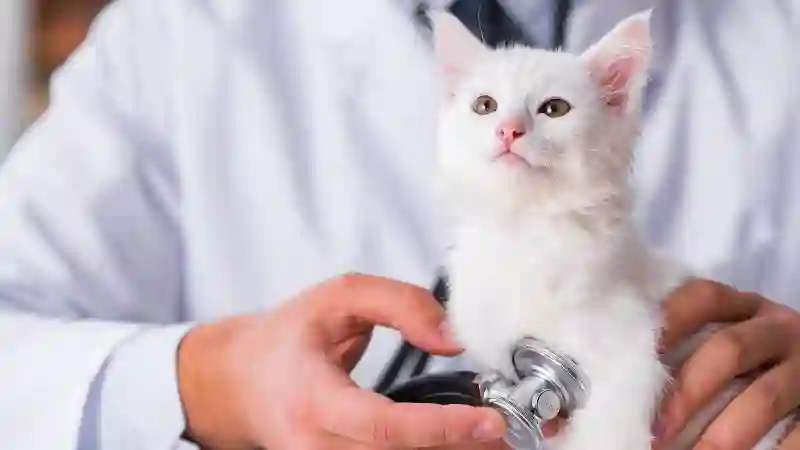Our feline companions bring immeasurable joy and love into our lives. As responsible cat owners, we want to ensure that our beloved kitties receive the best care, especially during emergencies. Cats, like any other family members, can face unexpected health crises that require immediate attention. This is where cat insurance plays a crucial role, offering financial support and peace of mind when it matters most. In this comprehensive guide, we will delve into the importance of cat insurance in emergency situations and how it can be a lifesaver for your furry friend.
The Unpredictability of Emergency Situations
Emergencies can strike at any time, and when they involve our beloved pets, the emotional toll can be overwhelming. Common emergency situations for cats may include:
1. Accidents: Cats can be curious explorers, sometimes leading to accidents such as falls, car accidents, or injuries from encounters with other animals.
2. Ingesting Harmful Substances: Cats may ingest toxic plants, chemicals, or foreign objects, leading to poisoning or blockages in their digestive system.
3. Sudden Illnesses: Cats can develop sudden illnesses or conditions that require immediate medical attention, such as seizures, respiratory distress, or heart problems.
4. Injuries from Fights: Outdoor cats may engage in territorial disputes or fights with other animals, resulting in injuries that require treatment.
5. Allergic Reactions: Some cats may have severe allergic reactions to insect stings, certain foods, or medications, requiring prompt medical intervention.
In these critical moments, quick access to veterinary care can make a significant difference in your cat’s chances of recovery. However, the financial aspect of emergency care should not be underestimated. Emergency veterinary treatments, surgeries, medications, and hospitalization can be costly, and not being prepared for these expenses can lead to difficult decisions.
The Role of Cat Insurance in Emergency Care
Cat insurance acts as a safety net, ensuring that financial concerns do not delay or compromise your cat’s emergency treatment. Here’s how cat insurance plays a vital role in emergency situations:
1. Immediate Access to Care: With cat insurance in place, you can seek immediate veterinary care for your cat without worrying about the cost. This is crucial in emergencies, where timely treatment can be life-saving.
2. Reduced Financial Stress: Dealing with a pet emergency is already stressful enough. Cat insurance alleviates the financial burden, allowing you to focus on your cat’s well-being rather than worrying about how to pay for their care.
3. Comprehensive Coverage: Cat insurance plans typically cover a range of emergency scenarios, including accidents, injuries, and sudden illnesses. This ensures that your cat is protected in various unforeseen circumstances.
4. Coverage for Diagnostic Tests: In emergencies, diagnostic tests such as blood work, X-rays, or ultrasounds may be necessary to determine the extent of your cat’s condition. Cat insurance often covers these tests, helping your veterinarian make accurate diagnoses.
5. Surgical Procedures: Emergency surgeries can be expensive, but cat insurance can cover a significant portion of the cost, ensuring that your cat receives the necessary procedure without delay.
6. Medications and Hospitalization: Cat insurance plans often include coverage for medications and hospitalization, which are essential components of emergency care.
7. Aftercare and Follow-up Visits: Some emergencies may require ongoing treatment and follow-up visits. Cat insurance can extend its coverage to include these aspects of care.
Types of Cat Insurance Coverage
Cat insurance plans typically offer two primary types of coverage:
- Accident Coverage: This type of coverage focuses on injuries and accidents, such as falls, car accidents, or injuries from fights with other animals. It is essential for active or adventurous cats who may be more prone to accidents.
- Illness Coverage: Illness coverage deals with diseases, ongoing health issues, and chronic conditions. It addresses non-accidental health concerns, including illnesses like diabetes, cancer, or allergies.
Additional Coverage Options
In addition to accident and illness coverage, some cat insurance providers offer additional coverage options:
- Wellness Plans: Wellness plans cover routine preventive care, such as vaccinations, dental cleanings, and annual check-ups. These plans help you budget for expected expenses and ensure your cat receives regular preventive care.
- Dental Coverage: Dental health is a crucial aspect of your cat’s overall well-being. Dental coverage can help offset the cost of cleanings, extractions, and other dental procedures.
- Prescription Medication Coverage: If your cat requires long-term medications, having prescription medication coverage can significantly reduce your out-of-pocket expenses.
Key Factors to Consider When Choosing Cat Insurance
When selecting cat insurance with a focus on emergency care, several key factors come into play:
1. Deductibles: The deductible is the amount you must pay before your insurance coverage kicks in. Higher deductibles generally result in lower monthly premiums but may require you to pay more upfront when filing a claim.
2. Reimbursement Rates: Reimbursement rates determine the percentage of your eligible expenses that the insurance company will reimburse after you’ve met your deductible. Common reimbursement rates range from 70% to 90%.
3. Coverage Limits: Insurance plans often have coverage limits, specifying the maximum amount the insurer will pay for a particular condition or treatment. Review these limits to ensure they align with your cat’s potential health needs.
4. Age and Health History: Consider your cat’s age and health history when selecting a plan. Kittens may need coverage for vaccinations and preventive care, while senior cats may require more extensive coverage for age-related illnesses.
5. Breed-Specific Concerns: Different cat breeds are prone to specific health issues. Ensure that the insurance plan you choose addresses your cat’s breed-specific concerns.
6. Budget: Your budget is a crucial factor in choosing the right insurance plan for your cat. While you want comprehensive coverage, it’s essential to find a plan that fits within your financial means. Balance the monthly premium with the deductible and reimbursement rate to determine what works best for you.
7. Provider Reputation and Customer Service: Research insurance providers to gauge their reputation and customer satisfaction. Read customer reviews, check ratings, and consider the ease of the claims process and the responsiveness of their customer service team.
8. Pre-Existing Conditions: Many insurance plans do not cover pre-existing conditions, so be aware of your cat’s health history and any existing conditions when comparing plans. Some providers may offer coverage for curable conditions after a waiting period.
9. Waiting Periods: Most cat insurance plans have waiting periods before coverage becomes effective. Understand the waiting period for the plan you choose to avoid any surprises when seeking care.
Comparing Cat Insurance Providers
Now that you have a clear understanding of the factors to consider when comparing cat insurance plans for emergency care, it’s time to start your search for the ideal provider. Here are some reputable cat insurance providers to consider:
- Healthy Paws: Known for its comprehensive coverage and fast claim processing, Healthy Paws offers accident and illness coverage with no annual or lifetime limits.
- Embrace: Embrace provides customizable plans with a variety of coverage options, including wellness plans and dental coverage. They also offer personalized customer service.
- Trupanion: Trupanion offers lifetime coverage with a simple pricing structure. They are known for their direct payment to veterinarians, making the claims process hassle-free.
- Nationwide: Nationwide offers a range of pet insurance plans, including wellness coverage. They also provide coverage for exotic pets, which can be beneficial if you have multiple types of animals.
- Petplan: Petplan is known for its flexibility and comprehensive coverage, including coverage for hereditary and chronic conditions.
- FIGO: FIGO offers a user-friendly mobile app for claims processing and provides coverage for exam fees and alternative therapies.
Conclusion
As responsible cat owners, we strive to provide the best care for our feline companions, especially in times of emergency. Cat insurance is an invaluable tool that ensures our cats receive the immediate medical attention they need without the financial burden. It empowers us to make swift decisions in the best interest of our furry friends, potentially saving their lives.
Remember that emergencies can happen when least expected. By investing in cat insurance, you become better prepared to face these unforeseen challenges, giving your kitty the opportunity for a full and healthy recovery. So, take the time to compare cat insurance plans and select the one that aligns with your commitment to providing the best care for your beloved feline companion, even in times of crisis.



